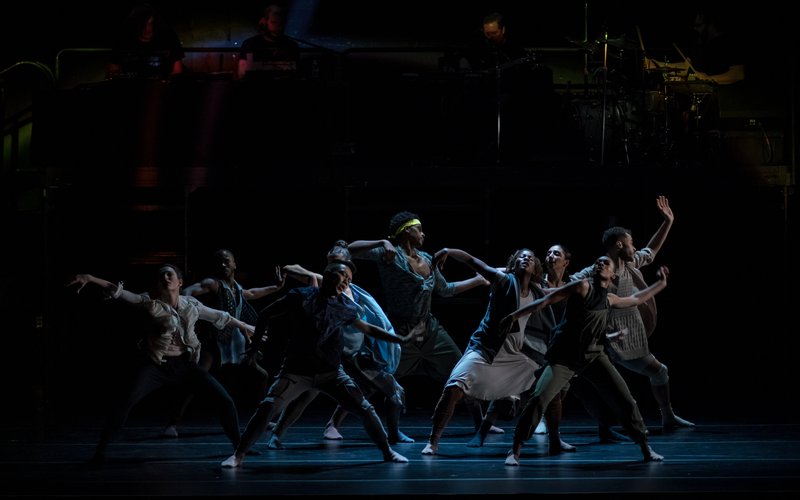
On Dec. 5, Bon Iver and TU Dance brought their much buzzed about multimedia, collaborative dance performance to The Paramount Theater in Seattle, Wash. KEXP writers Dusty Henry and Jasmine Albertson were on the scene to take it all in. Below, read a back-and-forth exchange between the two as the dissect this engrossing, powerful performance.
Dusty Henry: I tried to go into this performance as blind as possible. Yet, I couldn’t help but have some preconceived thoughts of what to expect. I fully expected to hear a bunch of noodling, instrumental musical passages – vague and oblique – that loosely connected with some sort of heady dance performance that would go over my head. What I saw was totally unexpected, engrossing, and brilliant in ways I didn’t anticipate.
Like almost everyone, I’ve been a fan of Justin Vernon’s since For Emma, Forever Ago and loved both his most recent Bon Iver album 22, A Million and his Big Red Machine record from earlier this year. Both of those two recent works are great points of entry for the Bon Iver and TU Dance performance. In fact, the musical score feels more like a fourth Bon Iver album than a formal score. The songs have bona fide verse, chorus, verse structure, with Vernon singing utilizing his opaque, wondrous lyricism and falsetto. In retrospect, his songwriting style is a perfect match for contemporary “interpretive dance.” His writing has always been about feeling instead of a direct message. I’m not an expert in dance and my guess is that there are many Bon Iver fans who feel the same. But his music helped me understand that artform a little more – using the abstract to convey an idea, rather than just saying it outright.
There’s a ton to describe and get into, but I’m curious what your thoughts are, Jasmine. What were you expecting and what were your initial impressions?
Jasmine Albertson: I, too, went into the night with little expectation or knowledge of what exactly was going to happen on that stage other than the fact that it was a specific score and dance collaboration with completely new music. The prompt show was completely captivating and visually stimulating. It’s something I’ve never seen before and one I won’t likely forget.
I’ve been stressing a bit ever since about how to unpack everything that happened in the show with my narrow knowledge and understanding of modern dance. It seemed there were a number of themes being tackled throughout the mixed media show: racism, environmentalism, love, hate, fear; many of them only realized in retrospect.
Racism, for example, is now so obvious to me as one of the main subjects but when the sample of Viola Davis’ speech at last year’s Women’s March about Jim Crow Law closed out the show, I thought, “Oh, that was supposed to be the theme?” Looking back at my notes, it all makes sense. The dancers were primarily – if not all – people of color and Vernon made it clear that they, not him, were the stars of the show. There was also a moment near the end during a song I *think* is called “I Can Here Crying,” where a hooded sweatshirt was projected on the wall. At the time, I wrote in my notes that it was “puzzling,” but it’s now soblatantlyy obvious to me as a reference to the hoodie Trayvon Martin was wearing during his 2012 murder especially with its juxtaposition with Davis’ speech.
The fact that we weren’t hit over the head with these themes is a tribute to Vernon, choreographer Uri Sands, and multimedia artists Anderson and Carlson, who did the projections. It takes true artistry to convey a message so massive and important in such subtle ways. It forces the audience to think about what’s being laid out before them and the possibilities of its meaning.
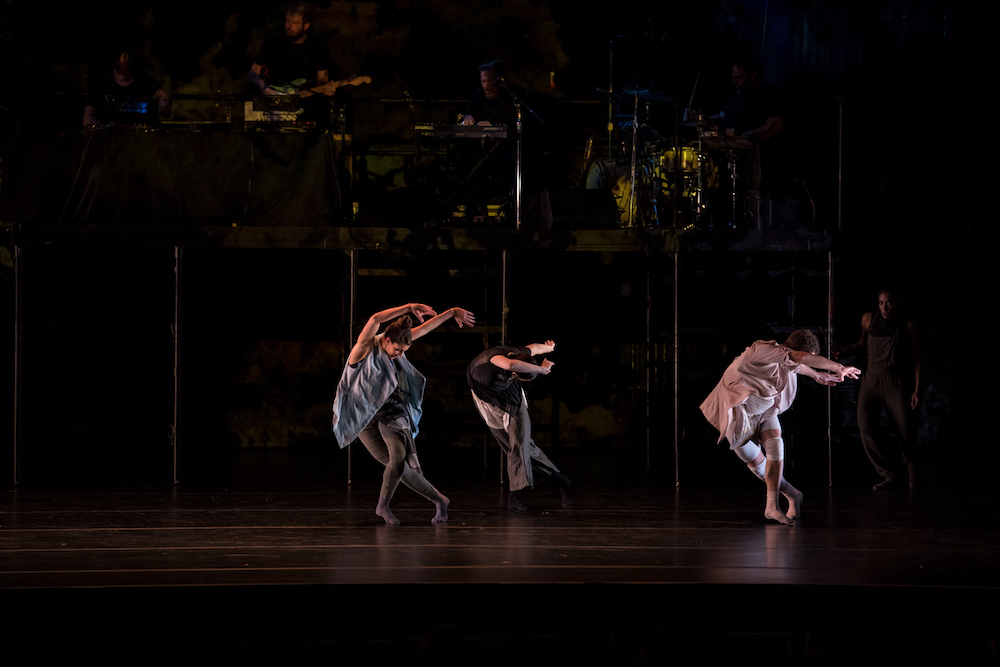
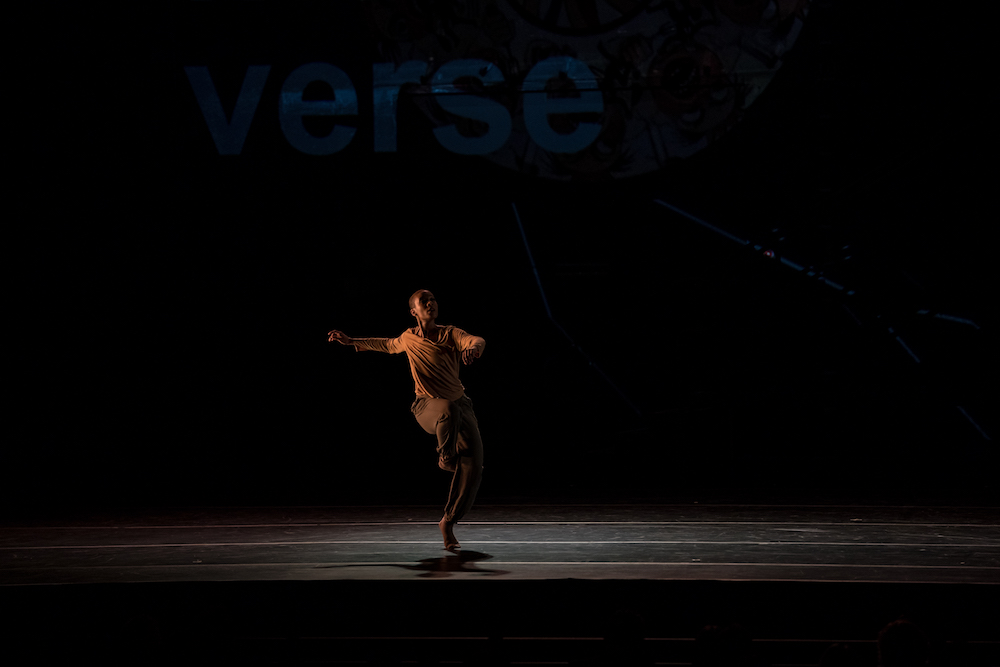
DH: Those are really great observations. I had a similar thought after the fact. “Wait, that’s what that was about? Ooooooh, I get it now.”
The show is so maximalist that it takes a while for it all to sink in. Originally, I thought it was going to be a take on information consumption in the modern age – which is basically to say, “the internet is rotting our minds.” Before the show, there was a giant projection of a clock behind the stage with a green hill in front of some nebulous designs. It took me a while to realize that it was a fusion of the classic Windows XP and Mac desktop wallpapers. Vernon seems to have a complicated relationship with the Internet and I really don’t blame him. I think about deleting my Twitter at least five times a day and deleting my Facebook twice as many times than that (sorry, Cambridge Analytica!). The first song and flurry of images, full of gifs and memes that we’ve all probably seen a million times. Often times in songs there would just be Helvetica text that read “no visuals,” which was very meta.
I like what you said about Vernon going out of his way to make sure this wasn’t about him. With the band standing on a metal platform above the stage, they more so frame the performance rather than were the central focus. Especially with topics like equity and racism, I think Vernon has an understanding that he can’t be the face of that conversation. Instead, he let us feel that confrontation and power struggle with the dancers. Like you, I didn’t realize many of those themes until the Viola Davis speech came in at the end. At first, I was pretty caught off guard. Then I started to wonder if it was “too on the nose.” And then I finally realized that I would’ve totally missed the message had he not done that. I think it expressed really great tact and foresight on his part to include this in the performance.
One of the things I was nervous about was if the music would stick. It’s always difficult when you go see and band and they play all new material, it’s a huge gamble. But all I’ve been able to think about since the show was how much I want this material to get an official release! It’s not a major departure from his recent works, but it certainly feels in the same vein. What did you think about the arrangements?
JA: I didn't even notice the Windows XP and Mac projection! (Although it could be because I slipped in right before it started). There are so many little details like that throughout the show to dissect that this piece could go on forever! One particular part I wanted to discuss, though, was the piece with the woman laughing. I think, based on the wall projections, that it was called "Heaven - 1867," but it was the most strangely juxtaposed and interesting piece. While this woman is laughing - not maniacally, but as if she just heard the funniest thing she's ever heard in her life - throughout the entirety of the song, an image of a burning forest and the words "god?," "dogs running," "dogs dying, " "garbage bags and ash" etc. are projected behind the band. I honestly wasn't sure what to take from that one, so I'd be curious to hear your thoughts!
As far as the arrangements go, I 10000% agree with you that I want and need to have "Come Through" as an official release. Other than the song I just mentioned, although even that one had a beautiful arrangement underneath the laughing, I can see all of these songs making a fantastic album that I would listen to repeatedly. It definitely had elements of Vernon's recent work and would follow 22, A Million rather seamlessly in his body of work. Vernon if you're reading this: PLEASE RELEASE THIS MATERIAL.
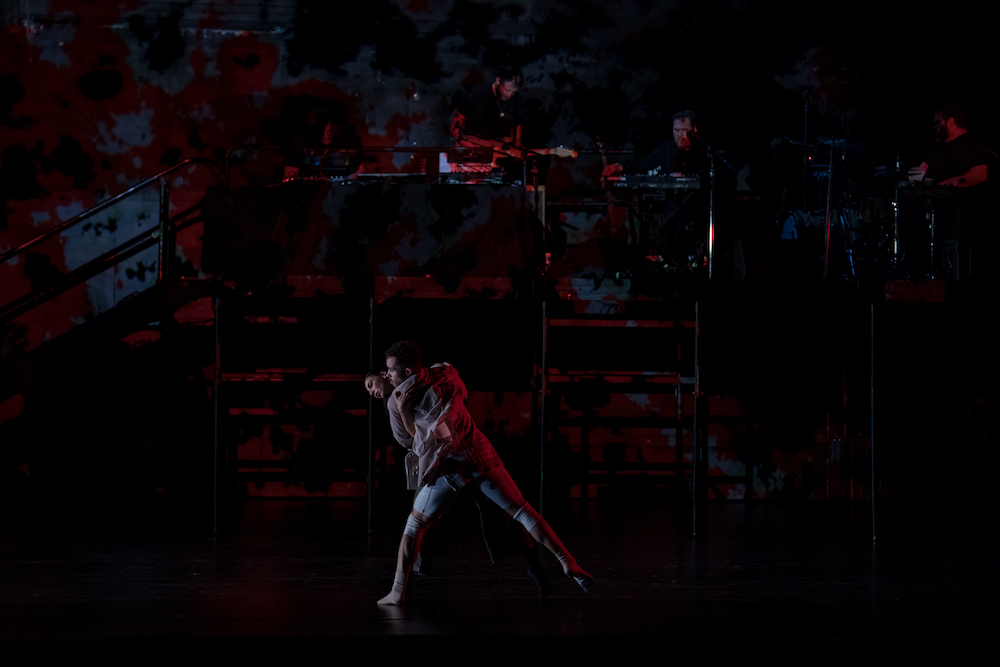
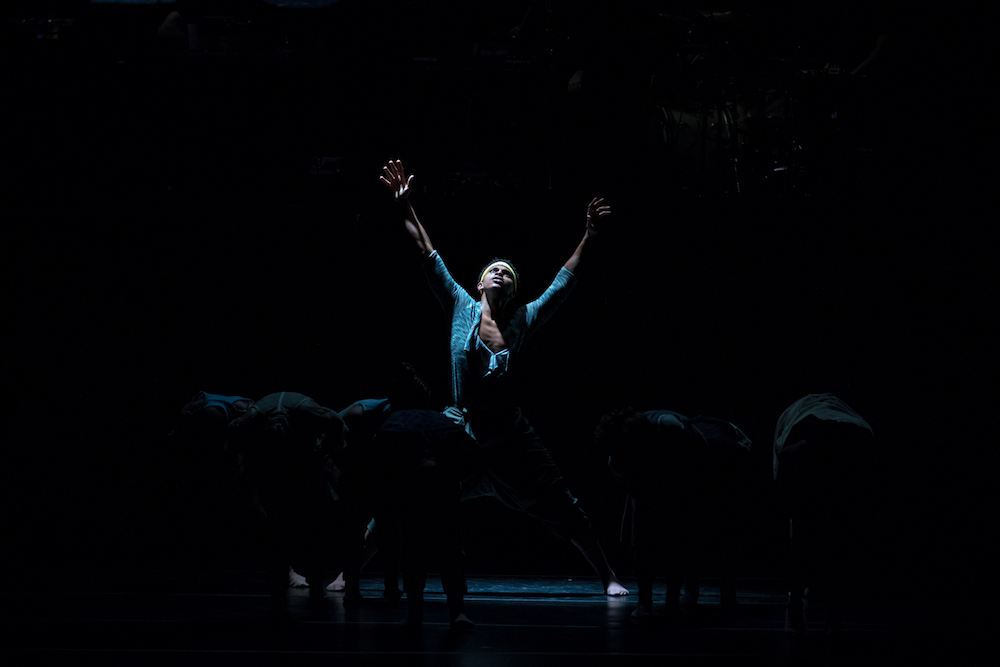
DH: I’m looking back at my notes and one of the first things I have written down is “digital fuckery,” which is maybe a more succinct way to get to what I’m talking about with the glitching visuals, haha.
I remember being a bit surprised by the laughter too. At first, I thought it was someone in the audience who just couldn’t keep their cool. There was a lot of interesting contrast going on during that song as you mentioned with the words projected on the screen behind them. It makes me really wish I could’ve gone to the second night of the performance, feel like there’s a lot to digest. But in the arc of the show, I felt like it was a much-needed moment of tension. As we started to approach the end, that section gave us one more thematic turn to throw us off guard. I also wonder if it had to do with anything about the environment? Garbage bags of ash calls to mind the increasing wildfires we’ve seen over the years. The laughter could be the public response – unfazed or even amused by the tragic events, rather than taking the threat to our wellbeing seriously. I might be reaching there, but it leaves a lot open to interpretation.
Overall, I’m impressed by the scope of this collaboration. I love how it didn’t feel like just a Vernon showcase or a Tu showcase. The balance between those two entities and the visuals made it so no one was upstaged, it all added to a greater vision. Even when it was unclear, you still felt this message of a power struggle. Race, economics, information, and the world around all on display in the performance. One thing that struck me was the very end when everyone was taking a bow. Vernon stood up from the metal platform and was visibly moved by the standing ovation. I’ve seen him a few times now and never have I seen him so joyful, or even really engaging with the crowd so directly. As much as I don’t want to see him retire from Bon Iver proper, I think he’s finding a new medium that works excellently for him. Kind of like how Radiohead’s Jonny Greenwood has taken to film scores, I can see a future where Vernon continues to create dynamic stage productions like these.
KEXP's Skyler Locatelli reflects on his trip to Angers, France and details the psych-rock odysseys he embarked on abroad.
A free show for The Paramount's 90th anniversary highlight a changing Seattle from one of its most stable and established musical landmarks.
David Byrne and stellar 12-piece band offer strong mixture of political commentary, Talking Heads favorites at The Paramount Theater.